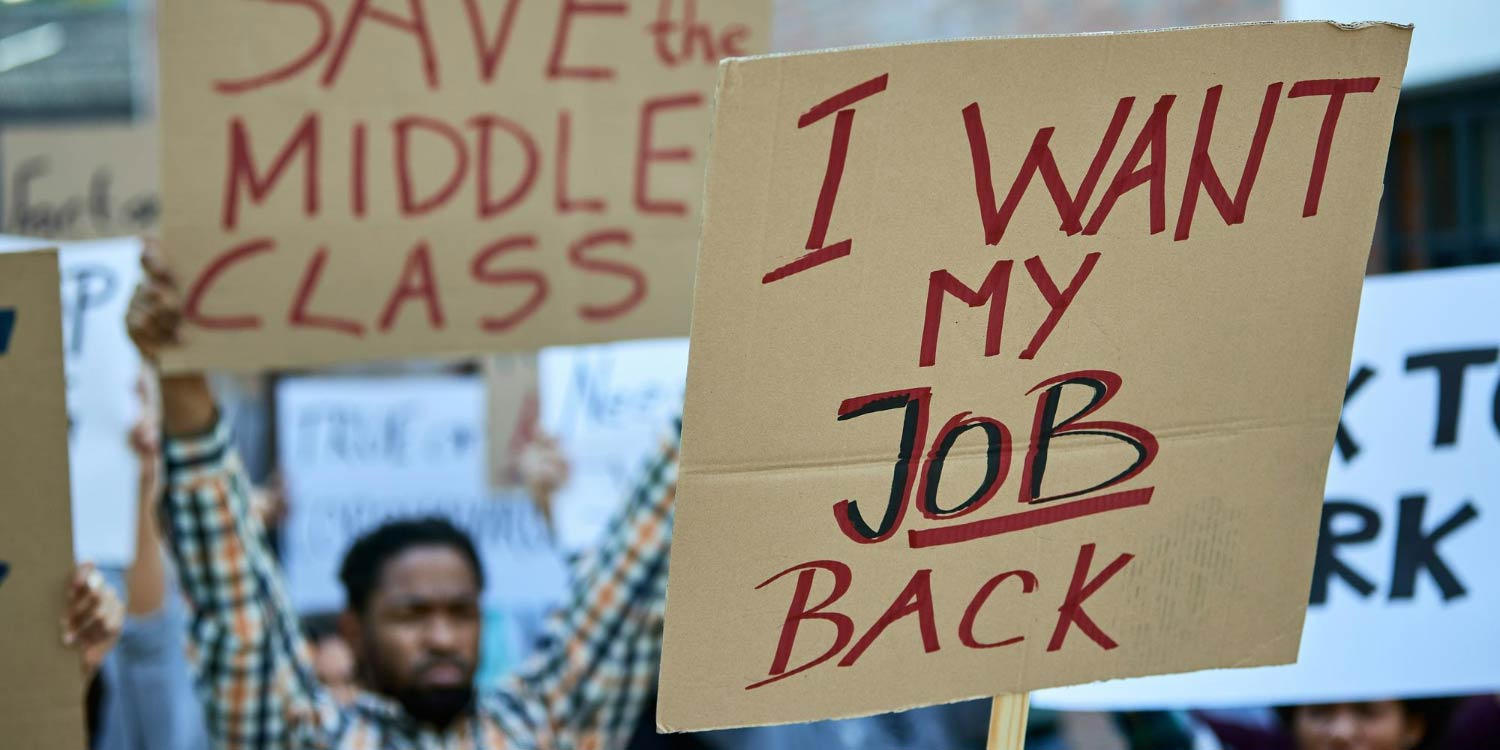
What Are Hardship Loans and When Should You Get One?
10 Min Read
No one is immune from financial hardships. They can strike you at any moment, even if you think that you have foreseen the unforeseen. Unfortunately, emergencies can be quite stressful and pressing, especially if you’re unprepared and face them with bad credit.
Luckily, some lenders offer hardship loans to help individuals overcome temporary difficulties. Such loans often come with more beneficial terms, which include fast funding, reasonable interest rates, and deferred payments. If you face an emergency and don’t know how to get financial assistance, you’re now at the starting point. Keep reading for more information!
What Is a Hardship Loan?
A hardship loan is a personal loan designed to help you overcome unexpected financial emergencies. These loans differ from those you take out to purchase a car or a house or finance your vacation. The main difference is that hardship loans are used for unplanned life situations that require immediate attention.
How Does a Financial Hardship Loan Work?
Like most regular personal loans, hardship loans come with fixed interest rates. They commonly range between 5.99% and 35.99% but can easily go beyond these limits when it comes to bad credit options. The repayment is typically made monthly in affordable installments. Loan terms can be up to 60 months.
A hardship loan working mechanism is pretty simple. You find a suitable lender, check out its requirements and apply if you meet them. An application process can be either in-store or online, depending on the lender. If you get approved, you need to accept loan terms by signing a loan agreement. Then, you’ll get the requested amount in a lump-sum payment. Some personal loan lenders make direct deposits into a borrower’s bank account, while others can give you a check.
After you get a loan, you need to make repayments that are due monthly. The due date will be specified in your loan contract. Some lenders make automatic withdrawals from your checking account after you provide them with access. This can help you avoid late or missed payments.
Where Can You Get a Hardship Loan?
Both traditional and online lenders offer hardship loans. However, their loan terms will differ. Traditional financial institutions are more focused on your credit history. Thus, they will check your credit profile through major credit bureaus and will be stricter when making a loan decision.
However, they offer favorable interest rates and flexible repayment schedules. Therefore, you should consider them first.
Contact your bank or credit union and ask whether it offers hardship loans. If yes, learn more about eligibility requirements to ensure you meet them. If you’re eligible, you can visit a branch to apply.
If your credit score falls below a lender’s minimum requirement, you can consider hardship options offered by alternative lenders. Most of them operate online and have no minimum credit score requirements. This way, it will be easier for you to get approved.
Types of Hardship Loans
Below are the most common types of loans that people use to overcome financial hardships.
Bad Credit Loans
A bad credit loan is an unsecured personal loan that is available to those with questionable credit backgrounds. Unlike conventional loan options, loans for people with bad credit are typically offered online. Among their advantages are high accessibility, speed of the process, convenience of obtaining, and no impact on your credit score. The main drawback is higher-than-average interest rates.
Unsecured Hardship Personal Loans + Secured Personal Loans
An unsecured personal loan can suit borrowers in good standing. As the name suggests, an unsecured loan doesn’t require any additional security. Lenders that offer unsecured loans access your credit report details to make a loan decision. As unsecured personal loans carry more risks to lenders, they come with stricter eligibility requirements.
A secured personal loan can help you out if you need a higher loan amount or have bad credit. To get a secured hardship loan, you need to provide collateral. Interest rates on secured loans are typically lower, but these loans tend to be riskier. That’s why they are called high-risk personal loans with guaranteed approval, suitable for borrowers with bad credit.
Joint Personal Loans
Joint or co-signer loans are another option for people with less-than-perfect credit. These loans allow you to get more favorable loan conditions by adding an individual with good credit to your application. Just keep in mind that a co-signer will be responsible for repaying the loan if you default.
Payday Alternative Loans (PADs)
If you’re a credit union member, a payday alternative loan can be available to you. This type of borrowing has several advantages over regular payday loans. Its interest rate is capped at 28%. Just like traditional loans till paycheck, PADs come with small loan amounts but allow you to repay them within 3 to 6 months.
Keep in mind that not all credit unions offer such hardship loan programs. Contact your community lender first and ask whether PADs are available.
Medical Loans
If you need extra cash to pay off an unexpected medical bill or a costly treatment, you can apply for a loan for a specific purpose. Medical loans are personal loans that can be used to cover any healthcare-related costs. There are multiple options available, from conventional products to in-store financing or medical credit cards.
Peer-to-Peer Loans
Peer-to-peer loans have gained popularity due to their convenience. Instead of borrowing money from financial institutions and meeting their strict requirements, you can take out a loan from another individual who acts as a creditor. Peer-to-peer loans don’t involve hard credit checks and don’t take into account your credit score. They also can be less expensive compared to other options.
Payday Loans
Payday loans are one of the easiest to get financing options created specifically for temporary financial difficulties. They provide access to small amounts of up to $1,000 to help you cover the gap between paychecks. The money should be returned in 2 to 4 weeks, so it can fit your short-term financial goals only.
Payday loans require no credit report checks through major credit bureaus. That is why they are extremely fast and accessible. However, they often come with hefty interest rates and origination fees.
Pros and Cons of Financial Hardship Loans
Hardship loans are not only about being a relief from financial emergencies. They have both advantages and drawbacks that you need to consider.
Pros:
- Predictable monthly payments;
- Flexible repayment terms;
- Unsecured options are available;
- Competitive interest rates for borrowers in good standing;
- The ability to get favorable terms with bad credit by bringing a co-signer or providing collateral;
- Fast relief for your financial emergencies.
Cons:
- Hefty interest rates for some options;
- You need to provide proof of income and meet other eligibility criteria;
- Additional fees may be applied;
- Some options come with a potential risk of losing assets used as collateral.
How to Get a Hardship Loan
Whatever hardship loan you choose, the process will be common in most cases. Below is a step-by-step instruction.
- Request copies of your free annual credit reports. This will help you stay informed about your credit score and have a better idea of your credit opportunities.
- Shop around for better offers. Pre-qualify through multiple lenders and compare their terms. Pay attention to interest rates, fees, repayment schedules, funding times, and other traits that can be important for you.
- Apply for a loan from a lender with better terms. Some lenders may allow you to fill out an online application form, while others may ask you to visit a branch.
- Get a loan decision. Depending on the lender and the loan type, it can take you from several hours to several days.
- Sign a loan contract. If approved, review your loan agreement, recheck the conditions, and sign loan documents if everything suits you.
- Use the funds at your discretion. You can get either a direct deposit into a checking account or a check. Funding terms depend solely on the lender.
Should You Get Hardship Loans?
Hardship loans can be a relief if you choose the right loan type. However, they can also be a distress if you take them out thoughtlessly. Hardship loans have their pros and cons that can affect your decision-making process. Thus, before you get a hardship loan, you need to look at it from different angles and make sure it suits your current financial situation.
Although you can use your personal loan funds at your discretion, you should avoid unnecessary spending. Hardship loans should be for unplanned expenses only. Below are the most common purposes for getting hardship loans.
- Medical or vet bills funding;
- Emergency home or car repairs;
- Sudden job losses;
- Funeral expenses;
- Covering other regular expenses or monthly bills.
Other Ways to Overcome Financial Hardships
If getting an emergency hardship loan is impossible for some reason, here are some alternative ways to go through tough times.
401(k) Hardship Withdrawal
If you set aside money for retirement using a 401(k) plan, you can always have a dip into your savings if an emergency arises. If you’re at or over the age of 59 and a half, you can withdraw money from your 401(k) savings account without penalties.
If you don’t reach this required minimum age, it’s still possible to withdraw money from an IRA. However, your withdrawal will be subject to penalties and tax consequences.
Government Grant and Loan Programs
The federal government provides various assistance programs for residents in difficult financial situations. Depending on the type of program, you can get food, childcare, medicine, housing, and other assistance.
Borrow from Friends or Family
If you can’t get a hardship loan or don’t want to pay more in interest, asking your loved ones for money can be an option. Just be responsible and prioritize repaying the debt on time so as not to damage your strong relationship with a person.
Employee Assistance Programs
Some employers offer emergency assistance programs. They are designed to help employees overcome financial hardships. Some examples include assistance with rebuilding a house after natural disasters, covering medical expenses, burial costs, and more. To access the program, you may be asked to provide a financial hardship letter.
Forbearance
If you experience difficulties with repaying your existing debt, don’t rush to take out a new loan to cover the existing one. Try to communicate with your lender first. Many lenders are willing to enter into a borrower’s position if there’s a valid reason for it.
Debt Relief Programs
Debt relief programs may be an option if you lose hope of getting out of the financial trap on your own. These programs refer to hiring a debt relief company that will help you develop a debt repayment strategy or make your debt more manageable. Such companies usually charge fees in the form of a percentage of your overall debt amount.
Bankruptcy
If your debts become unmanageable, you can declare bankruptcy. However, this option comes with multiple disadvantages that you need to be aware of.
First, bankruptcy doesn’t necessarily mean getting rid of debt. In some cases, it can involve developing a three-to-five years repayment plan without liquidation, making your debts more manageable. Even if you get debt relief, some of your property will be liquidated. Also, bankruptcy will be displayed on your credit report and will stay there for 7 to 10 years.
FAQ
How Much Can I Get with a Hardship Loan?
Depending on the type of hardship loan, you can get from $100 to $50,000. Some options may come with higher loan amounts, provided that you have a sufficient income or own a valuable property with a relevant cost.
Does a Hardship Loan Affect My Credit Score?
Loans from traditional lenders always come with hard credit checks. Thus, they leave a mark on your credit report right at the moment you apply. However, your on-time payments will boost your credit. Loans from alternative lenders don’t involve hard checks and don’t affect your credit score. However, they can damage your credit if you fail to make your monthly payments on time.
Can I Get an Unsecured Hardship Loan with Bad Credit?
Sure, you can, but get ready for higher interest rates and less favorable terms. Also, not all lenders are eager to lend money to people with less-than-ideal credit. Therefore, some options for borrowers with poor credit may require a co-signer.
Can I Get a Hardship Loan with No Job?
Some hardship loan options, such as payday loans or installment loans, can be available for the unemployed. However, you still need to have a steady source of regular income to qualify. A lender will approve you only if you can prove your capability to repay the borrowed amount.
Don't waste your time. Get a loan to cover your financial hardships.Apply



